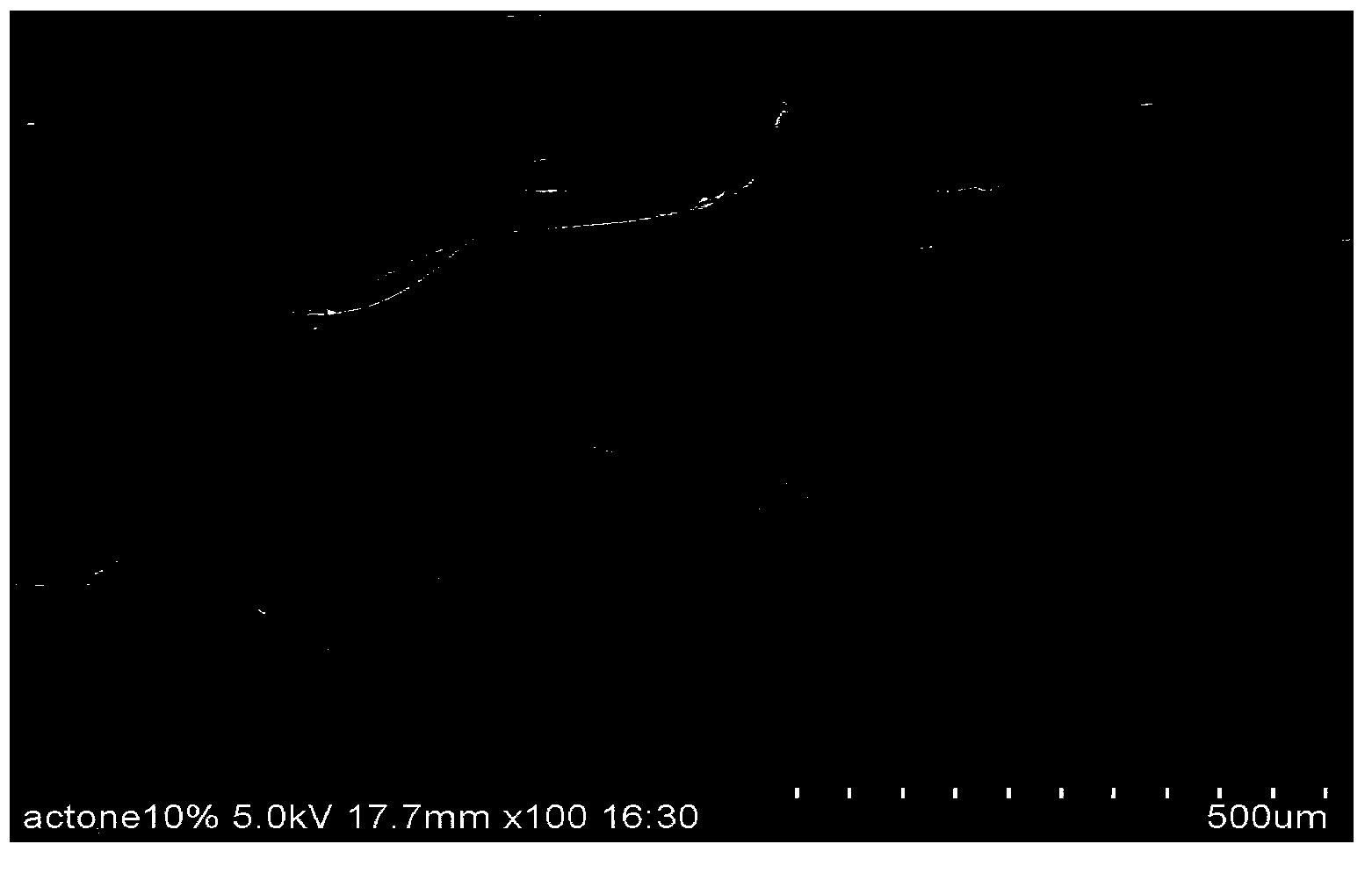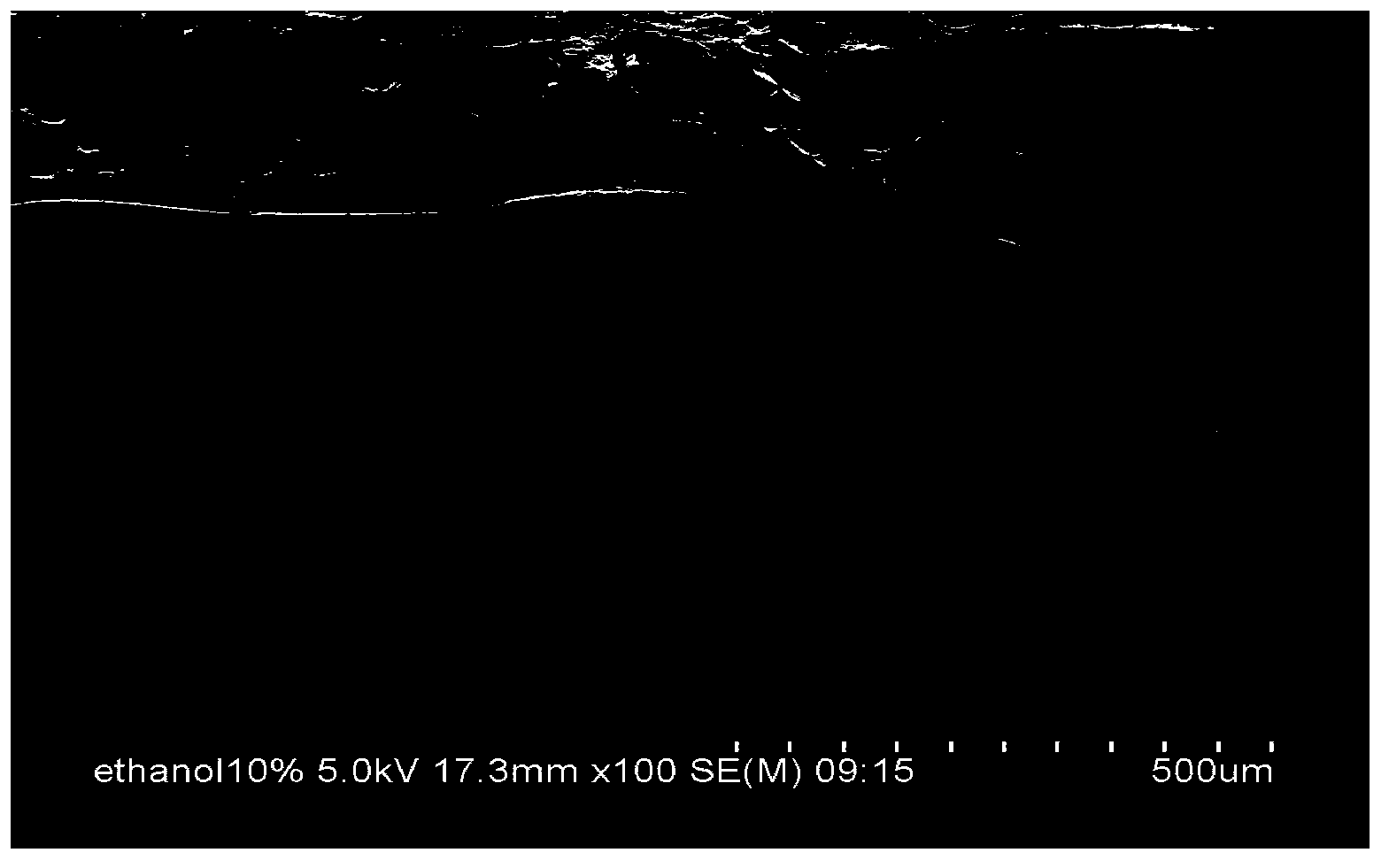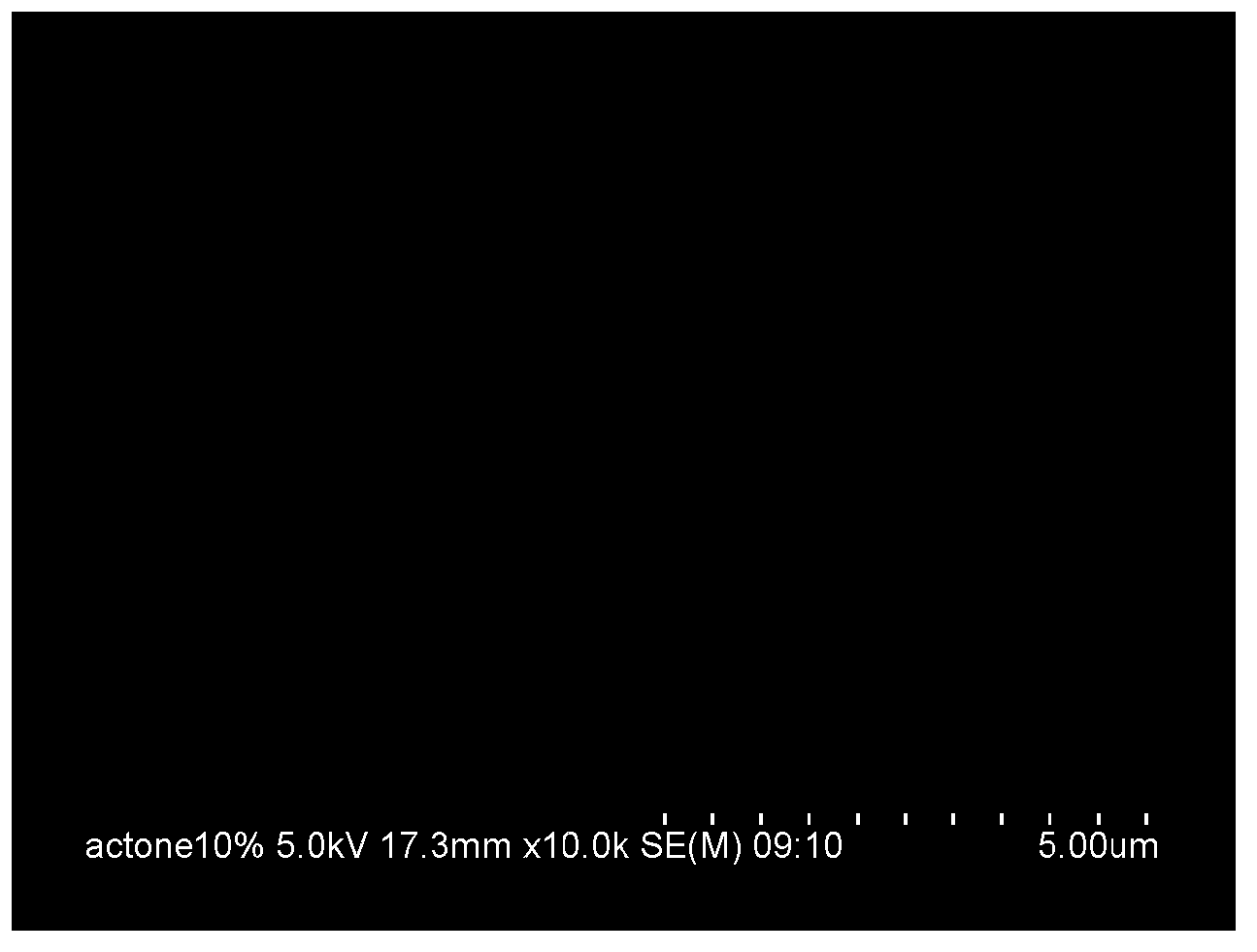Composite catalytic membrane applied to catalytic esterification and preparation method thereof
A technology for catalyzing esterification and catalytic membrane, which is applied in catalyst activation/preparation, reaction preparation of ester group and hydroxyl group, preparation of organic compounds, etc. and other problems, to achieve the effect of high catalytic esterification efficiency, easy control, and improved catalytic performance
- Summary
- Abstract
- Description
- Claims
- Application Information
AI Technical Summary
Problems solved by technology
Method used
Image
Examples
Embodiment 1
[0031] The non-woven fabric was modified by alkali-catalyzed hydrolysis, as follows: 5 g / L NaOH ethanol solution and 1 g / L cetyltrimethylammonium bromide aqueous solution were prepared respectively. Put the non-woven fabric into a three-neck flask, 50 mL NaOH ethanol solution, 1 mL immobilization accelerator, and then heat it in a constant temperature water bath at 40°C for 1 h, take it out, and soak it in ethanol for 2 h to remove unreacted reagents. Then the samples were dried for 3 hours in an electric constant temperature blast drying oven. The specific surface area and porosity of the basement membrane were measured by mercury porosimetry. The performance is shown in Table 1:
[0032] Table 1 Determination of performance parameters of different base films
[0033]
[0034] Then, the sulfated polyvinyl alcohol (4% sulfonation degree) was made into a 1 wt% casting solution with distilled water as a solvent, and then the solid acid zirconium sulfate Zr(SO 4 ) 2 Add, ...
Embodiment 2
[0037] The basement membrane modification method and casting solution preparation are the same as in Example 1. The difference is that the surface coating method is used to make the film: put the clean and dry glass plate on the pre-leveled scraping film platform, fix the non-woven fabric on the scraping film plate, and ensure that the non-woven fabric is flat and wrinkle-free and Fix it, pour a certain amount of casting solution evenly on one end of the non-woven fabric, scrape it into a uniform film of a certain thickness with a glass rod, then stay in the air for one minute, put it into an ethanol coagulation bath, and after solidification for 60 minutes, Add a cross-linking solution (50% glutaraldehyde aqueous solution and absolute ethanol at a volume ratio of 1:30) and soak for 2 hours for cross-linking to obtain a porous composite catalytic membrane. The catalytic test conditions are as in Example 1, and the catalytic properties of the composite membranes obtained by dif...
Embodiment 3
[0041] Preparation of composite membranes by dipping method is as described in Example 1, except that the sulfonated polymer (select polyvinyl alcohol, polyethylene-vinyl alcohol, polyvinylidene fluoride, polyacrylonitrile, various cellulose, polysulfone or one of the polyethersulfone polymers, the degree of sulfonation is 4%), and N, N-dimethylpyrrolidone is used as a solvent to prepare a 5 wt% casting solution. The corresponding sulfonated polymer / solid acid porous composite catalytic membrane can be obtained. At a temperature of 65°C, the mass ratio of oleic acid to methanol is 1:3, and the molar ratio of acetic acid to ethanol is 1:3. The catalytic esterification performance of the porous composite catalytic membrane with cloth as the base membrane is shown in Table 3.
[0042] Table 3 Effect of different sulfonated polymers on catalytic esterification performance
[0043]
PUM
| Property | Measurement | Unit |
|---|---|---|
| degree of substitution | aaaaa | aaaaa |
Abstract
Description
Claims
Application Information
 Login to View More
Login to View More - R&D
- Intellectual Property
- Life Sciences
- Materials
- Tech Scout
- Unparalleled Data Quality
- Higher Quality Content
- 60% Fewer Hallucinations
Browse by: Latest US Patents, China's latest patents, Technical Efficacy Thesaurus, Application Domain, Technology Topic, Popular Technical Reports.
© 2025 PatSnap. All rights reserved.Legal|Privacy policy|Modern Slavery Act Transparency Statement|Sitemap|About US| Contact US: help@patsnap.com



